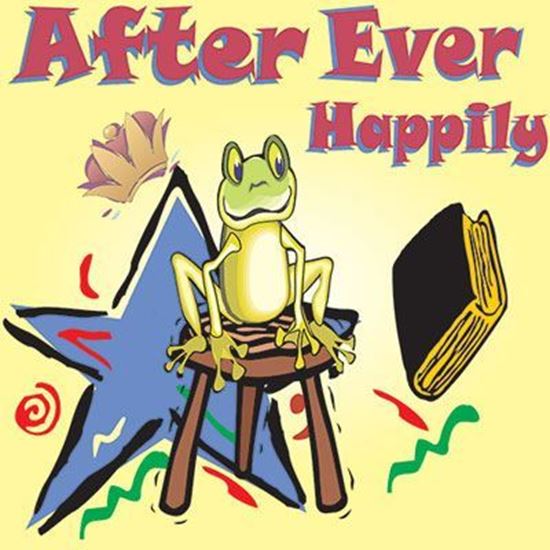
After Ever Happily
Christine's in big trouble. Her mother warns her not to open the old book of fairy tales, but Christine breaks the rules and opens it anyway. Now the pages are strewn across the stage. The book just happens to be magic, and the characters from the stories inside soon appear in Christine's family room. Chaos ensues as Cinderella kisses the Frog Prince, and the evil Queen from Snow White falls in love with Rumpelstiltskin. Hansel and Gretel are eating the aluminum siding off the house, and the Miller's Daughter convinces Rumpelstiltskin not to kidnap her baby, what with the dirty diapers and all. Prince Charming ditches Snow White for the very sleepy Sleeping Beauty, and the Prince from Sleeping Beauty can't understand why he doesn't have a name. This quirky one-act gem is simple to produce and will delight all.
Productions
Behind The Scenes
PLAYWRIGHT KANDIE KELLEY
TALKS ABOUT "AFTER EVER HAPPILY"
Q: WHAT INSPIRED YOU TO WRITE THIS PLAY?
A: I always wanted to do something with fairy tales, something I loved reading as a child. Of course, when I went back to read the stories over, I discovered how eerie these fairy tales actually were. Also, it seemed strange and somewhat misleading that the characters were so underdeveloped. Really, why would Cinderella want to marry someone she just met? She didn't even know his name! So, I went from there.
Q: WHAT'S YOUR FAVORITE PART OR LINE IN THE PLAY? WHY?
A: I like the character, Rump, especially when he realizes that he has no desire to raise a baby. What little old man would want to care for a baby?
Q: HOW DID YOU GET STARTED AS A PLAYWRIGHT?
A: Interestingly, I started writing plays as a very young girl -- about nine or ten. I remember writing a one-act called, "Don't Miss the Bus, Easter Bunny." My teacher allowed me to direct and produce all the plays I wrote. We would then perform them in front of the school.
As I got older, I detoured into poetry and fiction but came back around to plays after I started my youth theatre program, the Cracked Walnut Troupe. The cast would either be smaller or larger than the plays I would order, so I have ended up writing most plays my troupe produces. Last year, I produced, wrote, and directed eleven plays.
Q: WHAT DO YOU LIKE MOST ABOUT WRITING PLAYS?
A: Most of my plays are comedies, so for me, it's a complete release. My other writing tends toward the serious, so a lighthearted leap is great fun.
Q: WHAT IS THE MOST CHALLENGING PART OF THE WRITING PROCESS?
A: Having time! I have four children, a dog, and a husband (not in that order). I teach full time, am director of the English department, run a successful youth theatre company, and am finishing my MFA in Writing for the Performing Arts on a full dean's fellowship at the University of California at Riverside.
Q: WHAT ARE THE MOST IMPORTANT THINGS TO CONSIDER WHEN WRITING A PLAY?
A: The characters must be interesting. Fancy sets and all the action in the world won't matter if the characters are boring. Of course, I tend to consider how easy the sets might be to build since I end up doing much of the set building and designing myself. I think most directors appreciate simple sets when they don't have a huge budget to work with. And I believe that's the case with almost all school productions.
Q: WHERE DO YOUR CHARACTERS COME FROM? ARE THEY BASED ON PEOPLE YOU KNOW?
A: Mostly, I just make characters up. .
Q: WHAT DO YOU TRY TO ACHIEVE WITH YOUR PLAYS?
A: I try to make people laugh and maybe see old stories in a different way.
Q: WHAT ARE YOUR HOBBIES? WHAT DO YOU DO IN YOUR SPARE TIME?
A: Hobbies? Spare time? I wish. I do like to knit, but I haven't had much time lately for yarn and needles. At night, when all are sleeping, I read.
